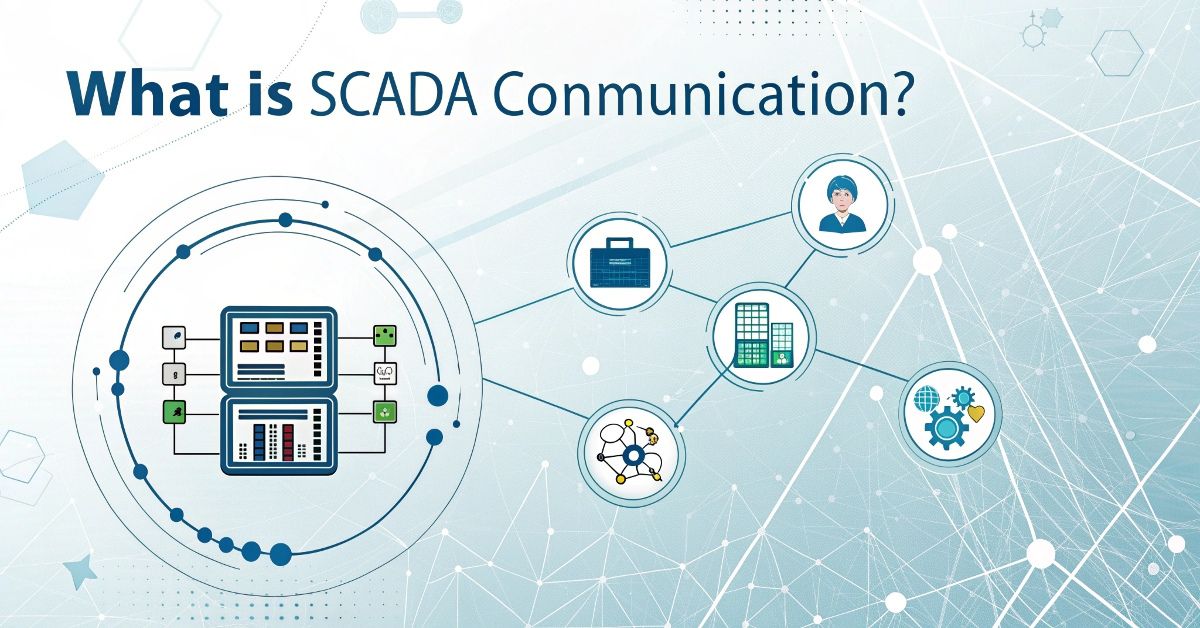
SCADA stands for Supervisory Control and Data Acquisition. The system functions as an industrial process monitoring and control capability. The method of communication between different system components makes up SCADA communication. The system facilitates information transmission between different compartments such as machines and sensors together with control centers.
A big factory operates automatically through its entire system. Through SCADA communication the workers have the ability to monitor real-time process events from their computer displays. When a problem occurs the system operates to notify the operators directly. This technology enables time and money savings with simultaneous prevention of bigger complications.
The various communication methods employed by SCADA systems exist as different options. Ethernet systems and wireless radio as well as cellular networks serve as communication channels for SCADA communication systems. The required communication method depends on both the industry and the current setup of the system.
Introduction to SCADA Systems
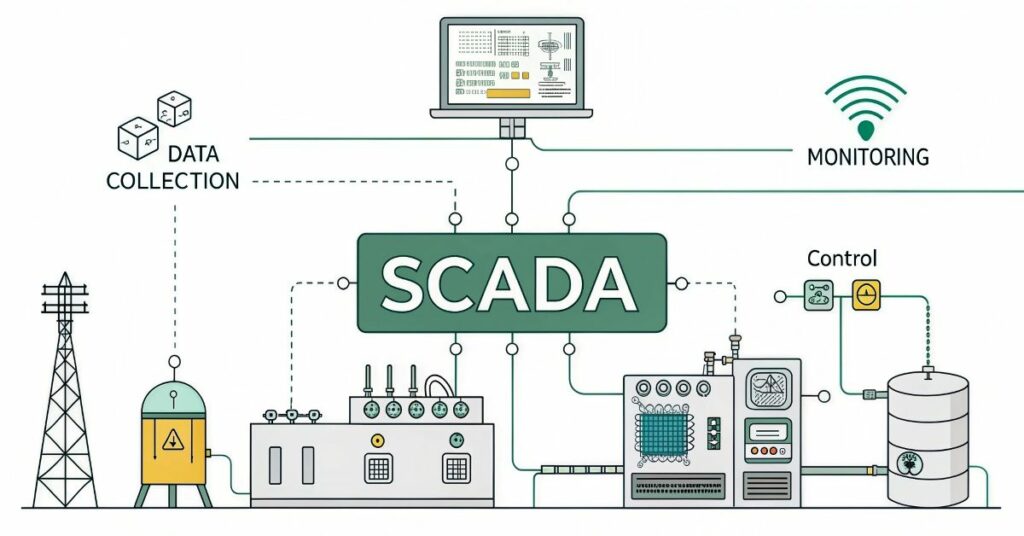
The primary function of SCADA systems consists of machine control and process monitoring. These systems enable stable operations for industries that include electricity and water as well as oil and gas departments. Employees can monitor and control equipment through a single location using SCADA.
The software allows businesses to detect problems with speed. By implementing SCADA communication systems organizations no longer require full-time presence of their personnel at installation locations. The implementation of SCADA technology creates safer conditions with higher efficiency and speed.
The Role of Communication in SCADA
The communication capabilities in SCADA systems hold vital importance. The system uses communication channels to join sensors with machines together with control centers. SCADA communication systems fail to function when communication quality deteriorates.
Key roles of communication in SCADA:
- Sends real-time data from machines to operators
- Allows remote control of equipment
- Helps find and fix problems faster
- Keeps systems working smoothly
- Shares reports and updates with the team
Types of SCADA Communication Protocols
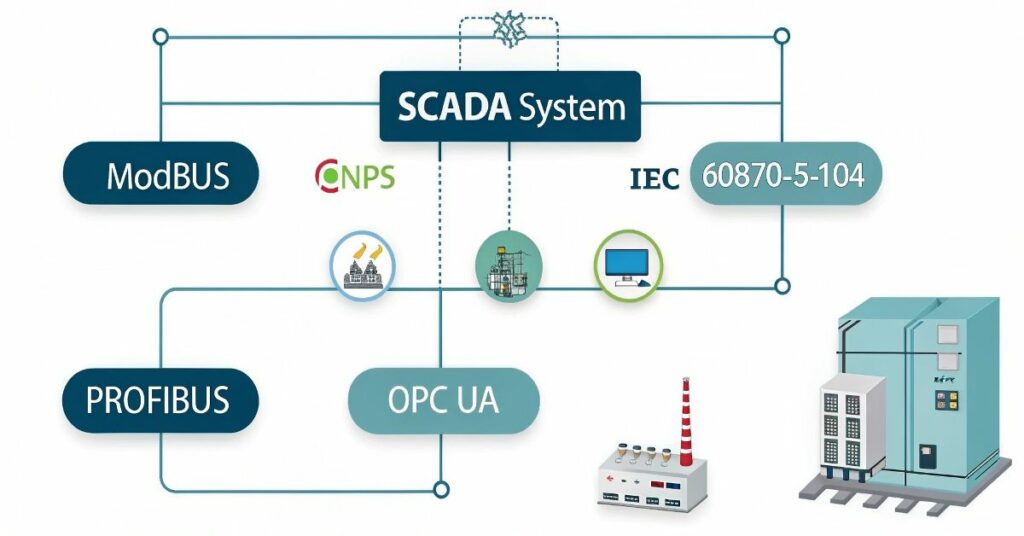
The data sharing functions of SCADA communication systems rely on specific protocols for communication. The set of technical rules function as communication protocols. Specific rules known as communication protocols enable inter-device communication. Every communication protocol possesses unique characteristics for achieving specific tasks in automation systems. Operations must have the appropriate protocol selection to achieve both safety and operational efficiency.
SCADA communication protocols:
| Protocol | Use Case | Feature |
| Modbus | Simple device communication | Easy to use and set up |
| DNP3 | Electric and water systems | Reliable and secure |
| IEC 60870 | European power systems | Good for long-distance use |
| Profibus | Factory automation | Fast and accurate |
| OPC UA | Modern systems and IT networks | Secure and flexible |
Wired vs Wireless SCADA Communication
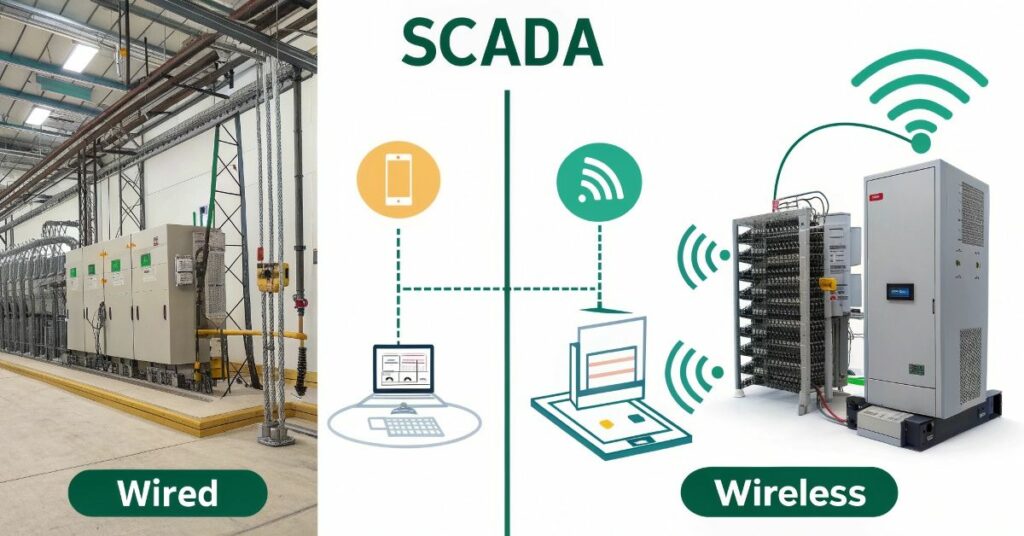
SCADA communication systems operate their communications either by wires or through wireless networks. A wired system establishes device connections through physical tubing. The system remains stable and signal loss occurrence remains minimal. Installation of this system becomes complex in extensive or isolated locations.
Devices linked by radio and wireless and cellular signals make up wireless communication systems. Installation remains straightforward and distant locations have better benefits with this system. The decision regarding wired or wireless setup depends on three main factors which include zone requirements, pricing considerations and system operational requirements.
Key Components Involved in SCADA Communication
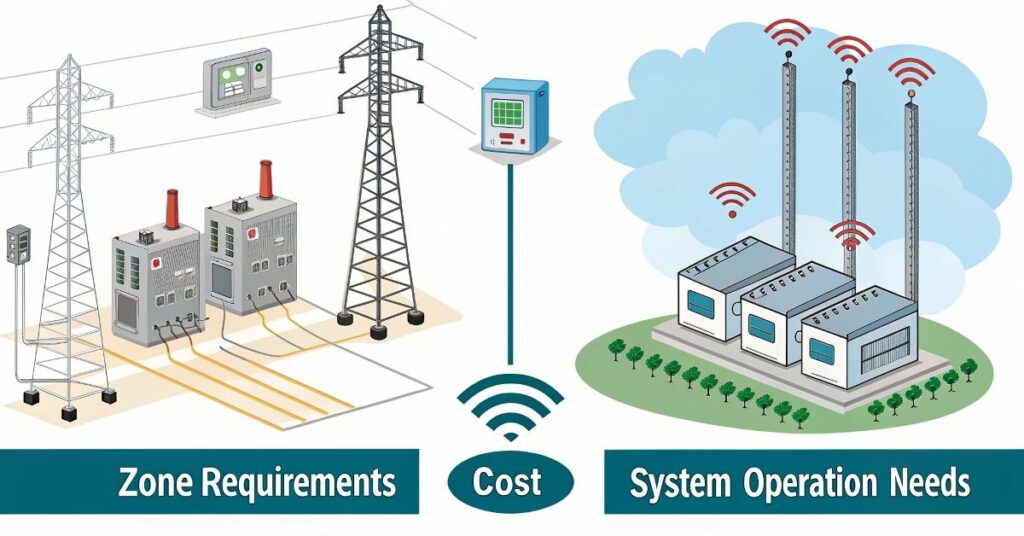
SCADA communication systems conduct their communications either via wires or wireless networks. The wired system makes connections between devices through physical tubings. The system is stable and loss of signal occurrence is low. Installation of this system becomes cumbersome in large or remote areas.
Equipment connected using radio and cellular as well as wireless signals constitutes wireless communication systems. Installation continues to be easy and remote points enjoy improved benefits under this system. The system is faced by risks of loss of signal in addition to issues of interference. The choice whether to use wire or wireless setup relies on three principal factors that involve zone demands, cost aspects and system operation demands.
Challenges in SCADA Communication Networks
The communication structure of SCADA Communication systems faces many different operational problems. The primary challenge involving the protection of systems against cyber security threats exists. Hackers make attempts to break in and manipulate reliable machine operation. Bad security measures pose severe destructive potential.
Signal delay and loss stand as important challenges for system operations. The system faces such issues when operating through wireless networks or vast cable lengths. The combination of unsuitable weather conditions together with outdated communication infrastructure produces interruption to transmission. The prevention of these problems requires protective measures which should be accompanied by routine testing protocols.
Future Trends in SCADA Communication Technology
Several new possibilities dominate the path which SCADA communication will take in the future. The introduction of 5G technology stands as one of the upcoming trends. Through 5G technology the connections between systems will become quicker and safer especially for wireless networks. The operation of SCADA systems will improve in real-time and delay times will decrease.
The storage and processing of SCADA data becomes more convenient by using cloud systems. Businesses will experience better capabilities to manage vast data quantities because of this approach. Workers located in remote areas can simplify their access to information through this system. Such trends make SCADA systems smarter and more effective in their performance.
FAQ’s
What is SCADA communication?
The transfer of commands and data happens between different areas of SCADA systems enabling industrial process monitoring as well as control functions.
The SCADA communication network establishes what difficulties?
Multiple obstacles include security threats through cyber-attacks combined with signal interruptions and delays that occur especially in wireless networks and distances exceeding certain limits.
What will be the main directions in SCADA communication technology development?
Future trends include the use of 5G for faster connections and cloud computing for better data management and remote access.
Conclusion
The modern industrial sector requires SCADA communication to operate efficiently. Through SCADA communication operators gain real-time access to system controls that boost efficiency and security of their operations. Various communication protocols and modes exist for SCADA systems to customize their operations according to individual requirements.
The technological evolution requires continuous improvements in SCADA communication systems. The future systems will become more efficient because of cloud computing and 5G delivery. Industry connection and security combined with operational efficiency will remain possible for decades through these technological advances.

